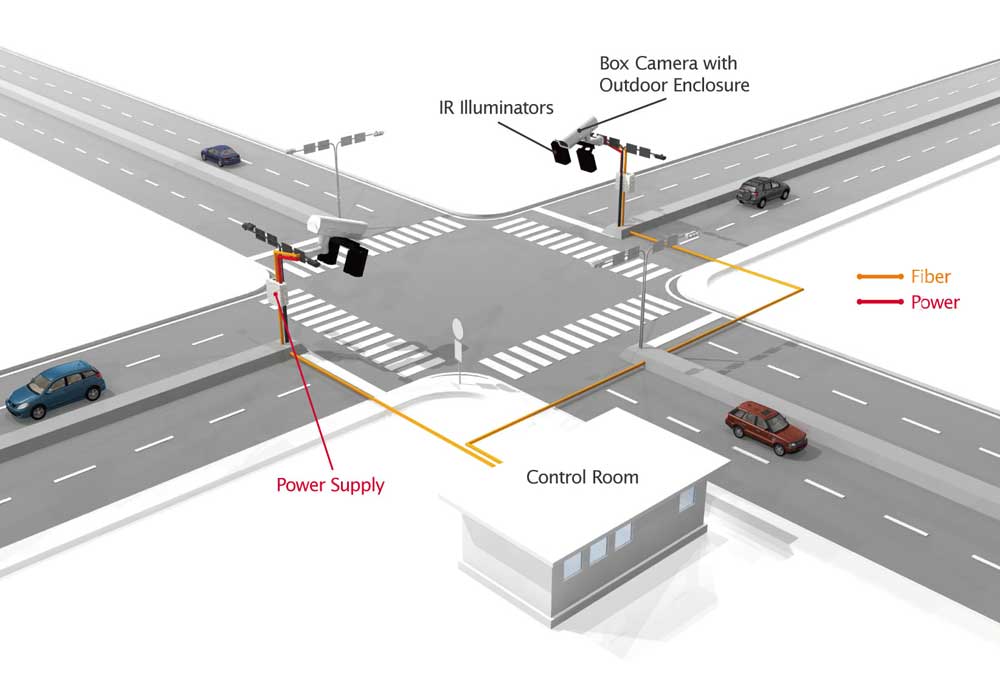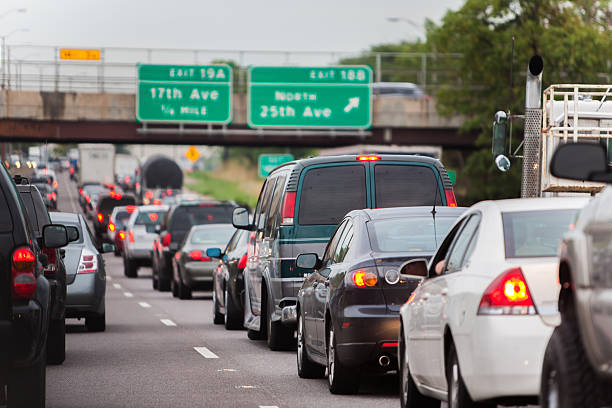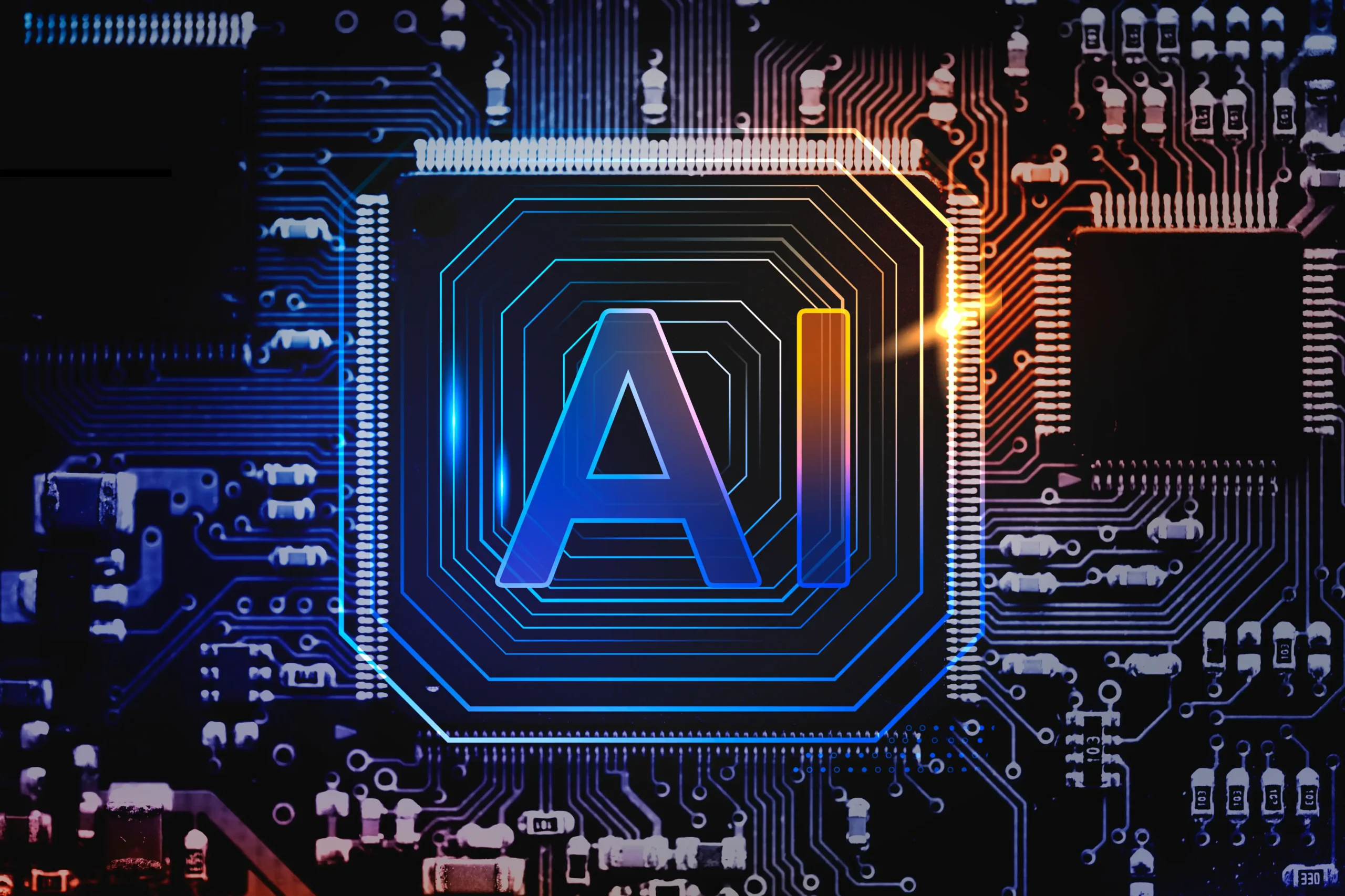IoT in Transportation
Due to the rising use of cars, traffic on the roads is rising exponentially, which raises the risk and severity of traffic accidents and traffic jams. With the city’s infrastructure constantly modernizing, it becomes necessary to create safe ways for people to move around the city.
As is well known, drivers depend on traffic control centers, intelligent traffic solutions, and road operators to move them safely and promptly along highways. We can’t grow effectively with the conventional traffic management systems since they don’t have enough coverage to manage all city traffic. Lack of real-time traffic and road user awareness is one of the challenges that road operators face.
Cities urgently require cutting-edge, intelligent technologies to effectively manage traffic and increase the comfort of drivers, walkers, and passengers. And the best way to address these needs is to enhance capacity, increase traffic efficiency and accuracy, enable vehicles to stop safely, receive prompt assistance in an emergency, and meet the rising demand for public transportation.
Do you know
The global report on IoT has stated that, over the projection period of 2021–2026, the IoT in the transportation industry is anticipated to grow at a CAGR of 14.5% and is projected to reach $.495.57 billion by 2030.
IoT-based Smart Traffic Management
The current traffic signal monitoring system lacks the efficiency to manage and monitor the heavy traffic on road networks or the road obstructions at the signals. Because of this, large cities need a centralized method of effectively controlling the flow of vehicles at traffic lights and along roads.
An intelligent IoT-based traffic signal monitoring system applying smart algorithms becomes indispensable to alleviate heavy traffic flow by allowing a significant portion of vehicles to cross through the traffic lights.

IoT Traffic Management Systems are automated solutions that leverage the latest developments in IoT technology. Every IoT platform has a distinct set of features and workings. Concerning the Smart Traffic Management System, it provides
- Data access and data storage.
- Communication, coordination, and device control capacities
- Implement software and the cloud for connected devices.
- Infrastructure for all of the above.
How does it work?
The installation of an IoT-based Smart Traffic Signal Monitoring (TMS) system at the signals allows for the observation of vehicle movement through cameras, RFID readers, wireless sensors, and other components. For real-time traffic monitoring, the robust data analytics tools connect a digital roadmap with GIS functionality with traffic lights and traffic control centers. This system uses digital image processing to collect the image of the traffic (which serves as input) at the intersection. The system then uses wireless sensors to transmit data (which serves as an output) to the control room or users.
Furthermore, using the RFID tags and readers, the system tracks the vehicles to reduce traffic jams at intersections, find stolen cars, or free up space for emergency vehicles. To do this, emergency vehicles must be equipped with RFID tags, allowing RFID readers to follow the location of such vehicles in real-time by scanning the signal. So, it is possible to offer right-of-way to emergency vehicles.
Cities can obtain the following core features of an IoT TMS:
1.Detection of traffic congestion
Technicians can keep an eye on all streets in a town from the city’s traffic control center thanks to cameras and sensors that are continually watching crossings.
2.Adaptive management
When there is congestion, dynamic systems, such as traffic lights, entry alarms, and express bus lanes, are adjusted.
3.Communication with connected vehicles
Smart traffic management can connect them to roadside gadgets to allow intelligent vehicles to communicate directly with other vehicles.
4.Emergency navigation
Giving priority access to police, fire, and ambulance services is a vital application of a TMS using IoT.
Benefits of IoT in TMS
IoT can be used to improve safety and reduce accidents in the transport industry. Sensors and beacons can be installed in cars and trains and integrated into street lamps, bus stops, and railway platforms to support visibility and avoid accidents. Transport organizations can analyze the data passing through IoT devices and improve the quality and efficiency of their services. The following are the top benefits of a TMS with IoT.

Safe journey
The safety of transportation systems all across the world can be increased by employing IoT technology to track metrics like train speed, carriageway temperature, or the number of vehicles at a crossroads.
Efficient methods
Municipalities and businesses that implement IoT technologies profit greatly in terms of productivity. They can create effective processes, better monitor crucial infrastructures, reduce operational costs and boost system throughput.
Environmental improvement
With enhanced congestion monitoring, IoT-enabled devices can react quickly to changing traffic patterns and provide real-time data to assist drivers in better route planning. Environmental benefits come from cutting down on traffic and energy use.
Exploring the technology and its benefits would have reinforced the idea that these Smart Traffic Control Systems incorporated with IoT are an eye-opener for solving traffic snarls in the cities.
Applications of IoT in the transportation industry
The IoT supports numerous activities that advance the transportation sector, in addition to traffic control. So we could find that many companies are investing in IoT in various facets of the transportation industry, particularly in systems for measuring traffic congestion, car telematics, security, surveillance, etc.
Here are a few such IoT applications.
Ticketing and tolls
Queues at toll booths on highways have become regular due to the increase in vehicles. Additionally, even if automatic tolls that use RFID tags have decreased the waiting times, they are only conceivable with IoT technology.
A smart car can now be connected to the Internet of Things, making it feasible to recognize it up to a kilometer away from the payment location, instantly remove the charge, and raise the barrier. Alternately, payments can be made using smartphones connected via a digital wallet.
Connected Cars
As was already mentioned, all contemporary automobiles support IoT connectivity. Tracking solutions based on IoT are already being deployed in the freight and passenger transportation sectors to help managers manage their fleets more efficiently. Additionally, monitoring devices gather information on downtime, drivers’ driving habits, and behavior.
IoT-based application examples include
- Distance traveled and fuel usage.
- IoT fleet management and travel planning.
- Driving schedule and rest periods for the driver
- Alerts for cornering, accelerating, braking, and excessive velocity
- Monitoring of vehicle loads
Management of public transportation
The public transportation sector employs cutting-edge transportation technologies such as advanced transport logistics systems, integrated ticketing, automated toll collection, and passenger information systems.
Advantages of IoT in Public Transportation Management
- Real-time vehicle tracking; informational displays for passengers at stops and stations; and arrival time warnings via mobile devices.
- Personalized timetable tracking for transportation includes details on major modifications like delays, station closures, or rerouting.
- Due to unanticipated events like accidents, road construction, crises, etc., real-time data tracking assists in building the ideal route.
Vehicle tracking systems
IoT sensors like AIDC (Automatic Identification and Data Collection) or RFID (Radio Frequency Identification) are fantastic tools for tracking and effectively controlling cars.
Based on microchips that are embedded, RFID uses radio waves to establish position. These tags can communicate information on the type of vehicle, its location, and its speed.
Advantages
- Utilize RFID to find lost vehicles.
- Vehicle traffic monitoring in real-time
- Effective vehicle signal transmission

Traffic control
The first objective of integrating IoT technologies into transportation is to solve the issue of traffic congestion. The shift to smart cities depends heavily on traffic management IoT solutions, which make it possible to expand the capacity of city streets without building new roadways. Using sensors, cameras, routers, and cellular technologies, they improve traffic flow and maintain traffic safety by dynamically adjusting things like highway exit counters, expressway bus lanes, highway message boards, and even speed restrictions.
According to the American Transportation Research Institute, congestion in the United States costs the freight industry $74.1 billion a year.
Modern automobiles come equipped with traffic jam assist technology that lessens the strain on the driver in boring driving circumstances. The BMW X5’s driver assistance features include the Traffic Jam Assistant, which actively supports the driver’s steering while automatically maintaining the required distance from the vehicle in front and regulating the vehicle’s speed until it comes to a complete stop.
IoT-based applications for traffic control include
- Smart parking
IoT sensors in parking lots that can convey information about accessible parking spots in real-time.
- IoT traffic signal
Sensors positioned in strategic areas can use IoT technology to gather traffic statistics. IoT Big Data systems can evaluate this data and use the results to locate other routes and improve traffic signals. With the light management system in place, the roadside lighting built-in with weather sensors will change based on the weather, the time of day, and how dark or light it is outside.
- Smart ambulance
Road sensors and video surveillance systems can help find occurrences and alert them to the closest emergency room.
With the help of digital traffic solutions, the transportation sector’s future appears promising. Therefore, we encourage you to benefit from the organizational and technological advances that are now obvious.
Thus, the need for an IoT-based intelligent traffic management system that can provide dynamic traffic signal processing to maintain track of traffic updates and send out timely alerts becomes imperative. We at Performix can offer you a feature-rich interactive IoT dashboard with traffic status on a precise road network map in real-time.
Our team creates software solutions with a range of functionalities. We help businesses create IoT mobile apps and deliver IoT big data solutions using cutting-edge technologies with a greater understanding of the troubles faced, enhancing driving safety and streamlining traffic management in your cities.






